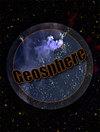Crushed turtle shells: Proxies for lithification and burial-depth histories
IF 1.7
3区 地球科学
Q3 GEOSCIENCES, MULTIDISCIPLINARY
引用次数: 0
Abstract
We propose a new proxy that employs assemblages of fossil turtle shells to estimate the timing and depth at which fossilization and lithification occur in shallowly buried terrestrial strata. This proxy, the Turtle Compaction Index (TCI), leverages the mechanical failure properties of extant turtle shells and the material properties of sediments that encase fossil turtle shells to estimate the burial depths over which turtle shells become compacted. Because turtle shells are one of the most abundant macroscopic terrestrial fossils in late Mesozoic and younger strata, the compactional attributes of a suite of turtle shells can be paired with geochronologic and stratigraphic data to constrain burial histories of continental settings—a knowledge gap unfilled by traditional burial-depth proxies, most of which are more sensitive to deeper burial depths. Pilot TCI studies of suites of shallowly buried turtle shells from the Denver and Williston basins suggest that such assemblages are sensitive indicators of the depths (~10–500 m) at which fossils and their encasing sediment become sufficiently lithified to inhibit further shell compaction, which is when taphonomic processes correspondingly wane. This work also confirms previously hypothesized shallow Cenozoic burial histories for each of these basins. TCI from mudstone-encased turtle shells can be paired with thicknesses and ages of overlying strata to create geohistorical burial curves that indicate when such post-burial processes were active.碎龟壳:岩化和埋藏深度历史的代表
我们提出了一种新的代理方法,利用龟壳化石的组合来估计浅埋陆地地层中发生石化和岩化的时间和深度。这一代理,即海龟压实指数(TCI),利用现存海龟壳的机械失效特性和包裹海龟壳化石的沉积物的材料特性来估计海龟壳压实的埋深。由于龟壳是中生代晚期和年轻地层中最丰富的宏观陆地化石之一,一套龟壳的致密属性可以与地质年代和地层数据相结合,以约束大陆环境的埋葬历史——传统的埋葬深度指标填补了这一知识空白,其中大多数对更深的埋藏深度更敏感。对丹佛盆地和威利斯顿盆地浅埋海龟壳套件的初步TCI研究表明,这些组合是化石及其包裹沉积物充分岩化以抑制进一步贝壳压实的深度(~10-500米)的敏感指标,而此时正是埋藏过程相应减弱的时候。这项工作也证实了之前假设的每个盆地的浅新生代埋藏史。泥岩包裹的龟壳的TCI可以与上覆地层的厚度和年龄配对,以创建地质历史埋藏曲线,指示这种埋藏后过程何时活跃。
本文章由计算机程序翻译,如有差异,请以英文原文为准。
求助全文
约1分钟内获得全文
求助全文
来源期刊

Geosphere
地学-地球科学综合
CiteScore
4.40
自引率
12.00%
发文量
71
审稿时长
6-12 weeks
期刊介绍:
Geosphere is GSA''s ambitious, online-only publication that addresses the growing need for timely publication of research results, data, software, and educational developments in ways that cannot be addressed by traditional formats. The journal''s rigorously peer-reviewed, high-quality research papers target an international audience in all geoscience fields. Its innovative format encourages extensive use of color, animations, interactivity, and oversize figures (maps, cross sections, etc.), and provides easy access to resources such as GIS databases, data archives, and modeling results. Geosphere''s broad scope and variety of contributions is a refreshing addition to traditional journals.
 求助内容:
求助内容: 应助结果提醒方式:
应助结果提醒方式:


